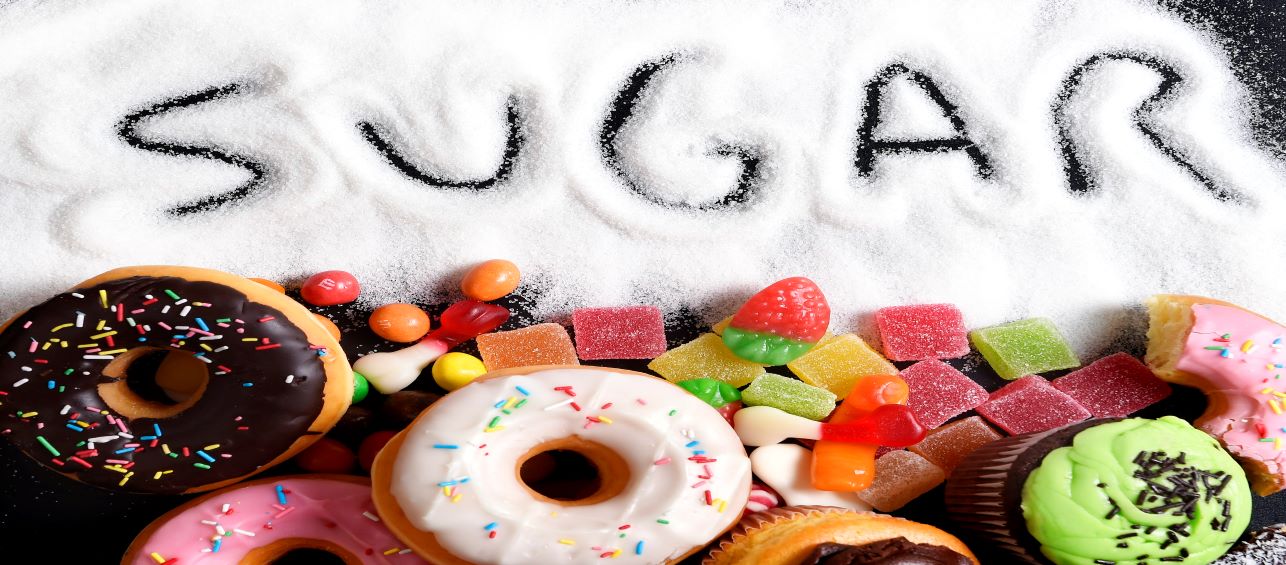How Do I Help My Underweight Child Gain Weight?
We are frequently asked this question by both parents and care providers: How do I help an underweight child gain weight with foods that are higher in calories?
As a pediatric dietitian and a parent, I have faced similar challenges working through this situation with my son when he was younger. Some of the more notable obstacles I encountered were related to finding higher calorie foods that my son would actually eat, and practical, inexpensive choices. And when I found good options, I realized that I needed a strategy to keep my son’s high calorie foods separate from the other family members who did not need to follow a high calorie diet.
It was also important to me to find options that did not have a large upfront cost and came in reasonably-sized packages, so that I didn’t feel bad about wasting food from the failed product or experiment.
HIGHER CALORIE FOODS TO TRY
Foods high in calories and protein can help your child gain weight. At the bottom of this article is a chart with calorie and protein boosting foods, along with associated calories/protein and suggested uses. These will give you some ideas of different foods that can be used to help improve your child’s weight gain.
USING SUPPLEMENTS IN YOUR CHILD’S DIET
In addition to the foods listed in the chart below, you can also incorporate supplements in your child’s diet to increase calories. Examples include:
- PediaSure®
- Boost® Kid Essentials(TM)
- PediaSmart® Organic Beverages
- Orgain® Kids
- And for kids with a milk allergy, Bright BeginningsTM Soy Pediatric Drink and PediaSmart® Organic Pea Protein
These beverages are ready to drink and typically have about 200 calories for every 8 ounces. They also contain protein and are supplemented with vitamins and minerals.
I recommend starting with one or two of these supplements per day as overuse can cause your child to lose interest in eating. I gave my son a pediatric supplement while we worked on increasing his daily calories and eating a wider variety of foods. He had about 4 ounces of it at snack time because he got more calories from the supplement than from the few crackers or pieces of fruit he would eat.
In some cases these supplements can be covered by the Women, Infants, and Children (WIC) program or insurance.
Some of the foods in the chart below can also be used to make a shake that can supplement a child’s diet.
TIPS TO HELP INCREASE YOUR CHILD’S CALORIES
After reviewing the Calorie and Protein Boosters chart below, combine food choices with these tips to help increase your success with upping your child’s calorie intake:
- Make food for the child that needs extra calories without giving it to the whole family. Add extra oil and butter to one serving of pasta, use extra nut butter on your child’s bread, serve whole milk with meals, or add extra cream and maple syrup to oatmeal.
- Purchase small packages and individual servings. This will help you avoid food waste while you’re experimenting with different types of foods.
- Young children have smaller tummies and therefore are not able to eat a large volume of food. Choose foods from the chart that will have the most calories in a small volume. For example hummus is 25 calories per tablespoon, but cream cheese is 50 calories per tablespoon and peanut butter is 100 calories per tablespoon. Therefore, if your child eats only small amounts and you’re looking for a good dip to have with celery, serve it with cream cheese or peanut butter.
- Do not allow them to eat whatever or whenever they want. This is common advice for parents when their child is underweight. In the world of child nutrition, parents are encouraged to practice what is called the “Division of Responsibility.” This means the parent’s role in feeding is to determine what a child is offered, when it is offered, and where it is offered. It is the child’s job to decide if they will eat it and how much they will eat.It is not optimal for a child to have unlimited access to food as a way to address being underweight. This can result in constant snacking and grazing, which actually can lead to a child never being able to take a larger volume of food because they are always a little full. Following the Division of Responsibility encourages structure to eating. Typically children need to be offered 3 meals and 2-3 snacks per day. Generally, snacking should be discouraged 1-2 hours before a meal or snack time. This allows the child to come to the meal hungry and consume a larger volume of food.
- Balance a healthy diet with high calorie foods. Many families feel like their child is not eating healthy when calories are increased. You can make the diet balanced by using the foods listed in the Calorie and Protein Boosters chart. For example, if your family is having grilled chicken for dinner, offer a high calorie side item with it, such as sweet potato fries and steamed broccoli. Then melt butter on the portion for the child who needs the extra calories.
If your child has never been diagnosed as being underweight but you are concerned, discuss it with your pediatrician. He or she can review the growth history and determine if there is reason for concern. If it is recommended that your child needs to eat more calories, consider a referral to a registered dietitian.
In the Cincinnati area, your child can be seen by a registered dietitian in the Cincinnati Children’s Outpatient Nutrition Clinic. If your family is outside of Greater Cincinnati, I suggest using the Find an Expert feature from the Academy of Nutrition and Dietetics to find a pediatric dietitian in your area.
CALORIE AND PROTEIN BOOSTERS
| Food | Calories / Protein per serving | Uses |
| Oils (canola, safflower, olive, or coconut) | 40 calories/teaspoon 0 protein | Use in salad dressings, toss with pasta or cooked vegetables, and use in baked goods. |
| Butter (can use either dairy or soy butter) | 35 calories/teaspoon 0 protein | Spread on toast or bread, melt onto vegetables and pasta, and use in various baking recipes. |
| Nuts (calories per ounce) |
|
Use in baked goods, sprinkle on yogurt and cereal, trail mix, salads, and stir fry. Whole nuts can be a choking hazard to children less than 3 years of age. |
| Nut and Seed butter (peanut, almond, cashew, and sunflower seed) | Per tablespoon: 100 calories 3-4 grams protein | Use as a dip for fruits or vegetables, spread on crackers or toast, stir into hot cereals. Some brands of sunflower seed butter are nut free. |
| Eggs | 80 calories per egg 6 grams protein | Use as breakfast food, add to baked goods, and when hard boiled can be eaten as a snack. |
| Hummus or other bean dip | Per tablespoon: 25 calories 1-2 grams | Use as dip for vegetables or a sandwich spread |
| Cheese | Calories per ounce
|
Use as toppings for sandwiches and soups, melt into casseroles, sprinkle on vegetables, or as a snack. |
| Heavy Whipping Cream | 45 calories/tablespoon 0 grams protein | Use as some of the liquid in hot cereal, add to milkshakes, smoothies, and other beverages. Use in casseroles, potatoes, rice, or noodles. |
| Whole Milk Yogurt | At least 140 calories/cup 6 grams of protein | Use as a snack, dip with fruit, or mixed into a smoothie. |
| Cream Cheese | 50 calories/tablespoon 1 gram of protein | Spread on bagels or toast or use in dips and sauces. |
| Sour Cream (Do not use reduced fat or fat free) | 25 calorie per tablespoon 0 gram protein | Top on potatoes, use in dips, and mix into casseroles or soups. |
| Sweet Potato |
|
Use in soups, casseroles, and baked goods. |
| Peas | Per 1/2 cup:
|
Mix with rice, pasta, soups, and casseroles. |
| Avocado | 240 calories/fruit 4 grams of protein | Slice on sandwiches and salads, mash as a dip for chips and vegetables, and add to smoothies. |
| Banana | 1 medium sized fruit 105 calories per banana 1 gram of protein | Eat as a snack, mash to put in baked goods, blend into a smoothie or milkshake, and use as a topping for cold or hot cereal. |
| Flax seed | 1 tablespoon 45 calories 2 grams of protein | Add to salads, soups, baked goods, yogurt |
| Dried Fruits | Calories per ounce
|
Use in a trail mix, mix with yogurt, top a salad, add to cereal, or as a snack |
| Pure Maple Syrup | 50 calories per tablespoon | Use to top pancakes or waffles, use to flavor hot cereal, yogurt, or smoothie |
| Honey | 65 calories per tablespoon 0 grams | Use to sweeten milkshakes or smoothies, mix into hot cereal, and use as a dip for chicken. Do not give to children less than 1 year of age. |
| Canned Coconut Milk | 25 calories per tablespoon | Add to sauces, smoothies/shakes, and soups. Do not use the light or fat free versions. |
| Wheat Germ | 25 calories per tablespoon 2 grams protein |
Additional Options
| Food | Calories / Protein per serving | Uses |
| Ice Cream | 130-250 calories per 1/2 cup 2-4 grams protein | Milkshakes, topping for pancakes, waffles, or as a snack |
| Instant breakfast (1 packet) | 130 calories 5 grams protein |
Mix with 8 oz. of whole milk Add to hot chocolate, pudding, milkshakes |
| Sweetened condensed milk | Per tablespoon 60 calories, 1.5 grams protein |
Add to pudding, milkshakes, pies |
| Salad dressing | Per tablespoon 80-100 calories | Add to salad, raw or cooked vegetables as a dip |
| Mayonnaise | Per teaspoon 45 calories | Use on sandwiches, in cold salads or as a dip |
| Jelly/jam | Per tablespoon 55 calories | Spread on toast, biscuits, muffins Use as an ice cream topping or in a milkshake. |
| Milk Powder, made from whole milk | Per tablespoon 40 calories 2 grams of protein | Add to milk, yogurt, pudding, mashed potatoes, etc. |
For more information or to speak to one of our Pediatric Nutrition Specialists, contact our Nutrition Clinic.






This is a great article on adding calories when needed! an often unexpected side effect is the potential increase in cavities ! Each bottle of Pediasure for example contains 18 grams of sugar, that’s 4 ½ teaspoons of sugar in only 8 oz., which is exactly the same sugar content as in sweet tea. Gaining calories in children who are struggling with growth is always the most important aspect but parents should understand that regular oral hygiene (maybe even brushing 3x /day) as well as increased visits to the dentist are key in preventing cavities!